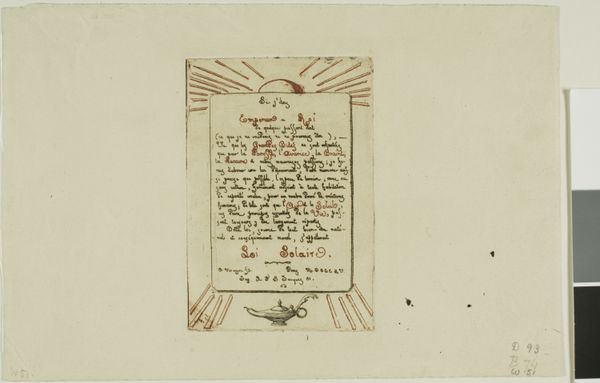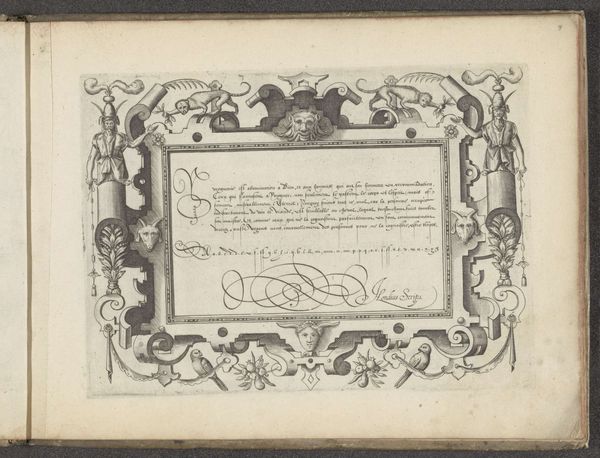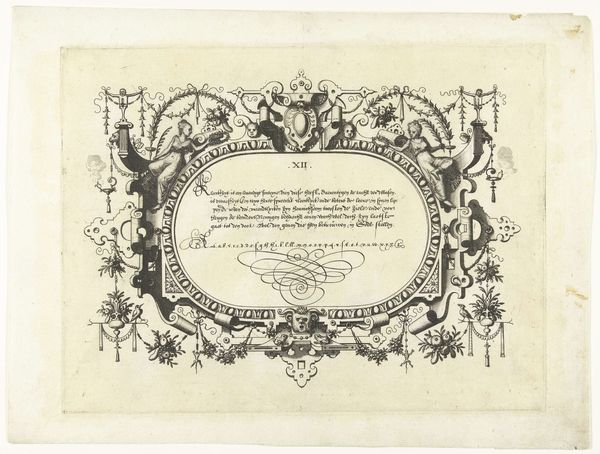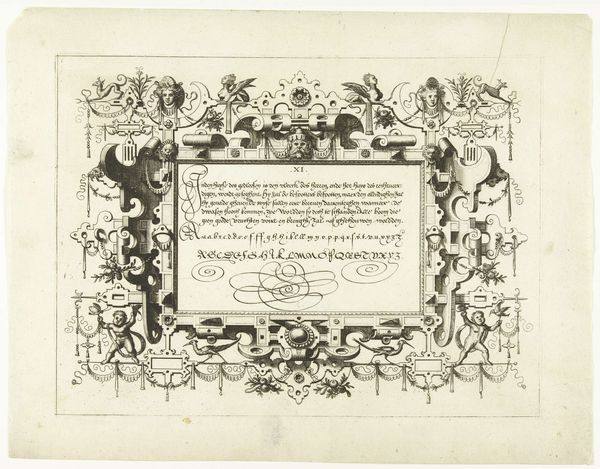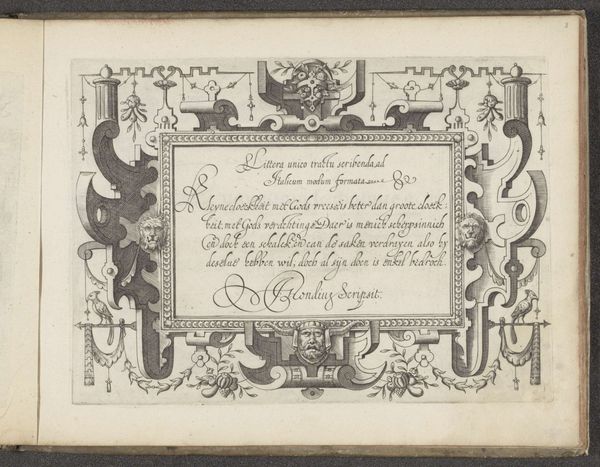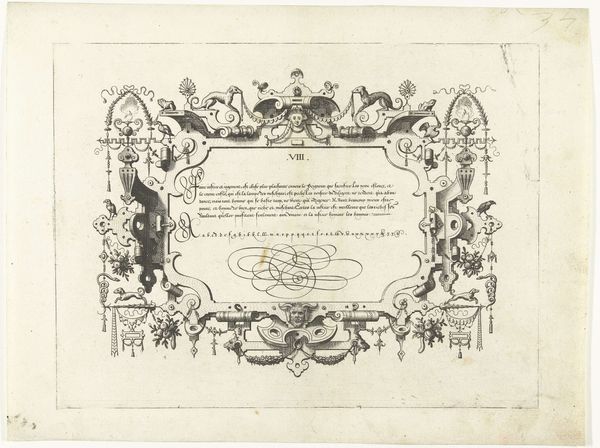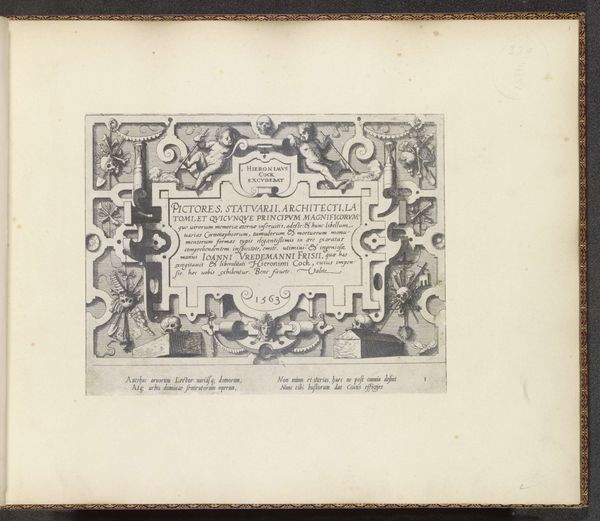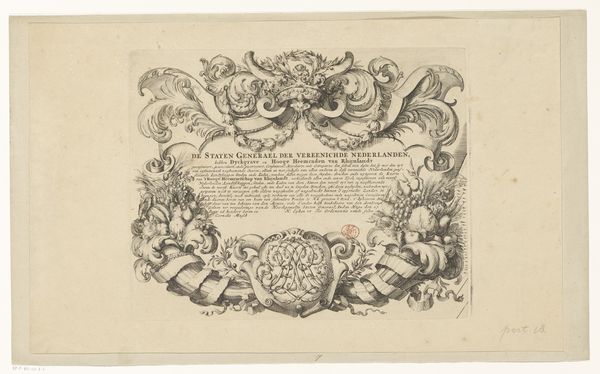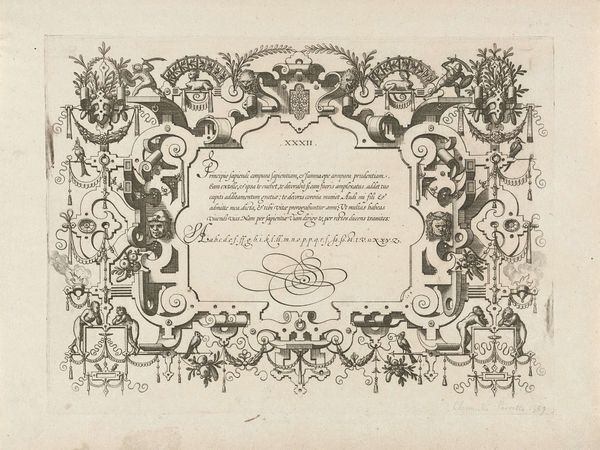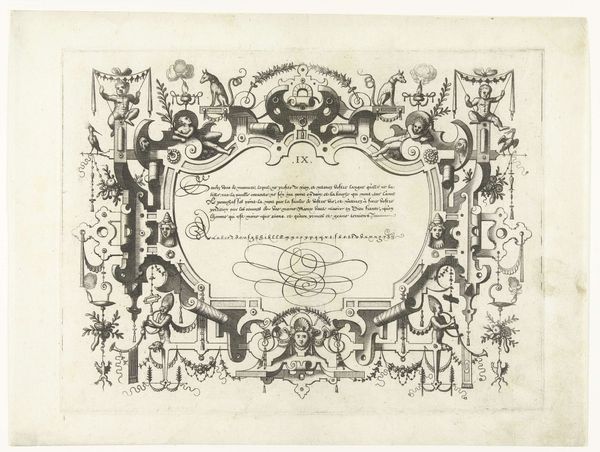
Dimensions: plate: 6 1/4 x 9 7/8 in. (15.9 x 24 cm)
Copyright: Public Domain
Curator: Welcome! We're looking at "La loi lunaire, No 1 (Lunar Law, No 1)," an etching by Charles Meryon, created in 1856. Editor: This piece feels… intense. There's a dreamlike, almost obsessive quality in the tight linework. The flame image draws the eye, holding potent symbolism, doesn't it? Curator: Indeed. Let’s think about Meryon’s process, which involved meticulously etching his images onto copper plates. That very process can convey something of that obsessive quality you observe, the artist's labor deeply ingrained in the material itself. Note also the surrounding ornamental detail. Editor: I see so much packed into those borders. What’s particularly interesting is the candle motif, inverted on the left and right as well as above the titular law—there are symbolic layers here. Perhaps ideas of law or judgement inverted in this depiction? Curator: It’s tempting to view them through the lens of romanticism. However, I cannot avoid engaging with the document itself. Notice how the script appears almost intentionally indecipherable, emphasizing perhaps the abstract authority and social constructs which hold real-world weight, printed for mass consumption. Editor: Yes! I think what interests me more are the mountains which ground that final flame motif. They are simplified and stylized, aren't they? Reminiscent perhaps of the alchemical symbols representing base elements—evoking deep transformative and spiritual symbolism. Curator: I would wager that his choice of etching as a medium gave Meryon significant capacity to circulate such visual vocabulary with relative ease—making otherwise cryptic iconography highly visible, subject to diverse interpretations, which persist to this day. Editor: Ultimately, the image carries complex cultural baggage. Meryon layers meaning, referencing power, mystery, and transformation through imagery and carefully constructed framing, creating enduring resonance across generations. Curator: By reflecting on its creation, material presence, and circulation, the labor required to communicate specific ideological, and perhaps psychological underpinnings of 19th century France becomes vividly clear. Editor: Absolutely! Seeing how these materials translate over time into shared meaning... there's so much for a viewer to ponder in this single print.
Comments
No comments
Be the first to comment and join the conversation on the ultimate creative platform.
